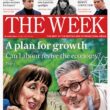Newsletters led by star writers and editors are proving an effective tool for publishers to supercharge loyalty, allowing them to build more personal relationships with readers and even improve conversions. But putting key journalists front-and-centre is not without its risks, as the FT’s Sarah Ebner and The Economist’s Andrew Palmer and Dominic Rech discussed at the MediaVoices Publisher Newsletter Summit.
News and information delivered without personality is suspect. It invites questions around the origin and purpose of said news. When a parcel is handed to you, you want to know its origin and why it was sent to you.
So, even when a newspaper or magazine tries its very hardest to be objective, that news has to be delivered with a certain voice or personality. Whether that’s through a style guide or visual identity for a print title, or via a newsreader for audio and video news, audiences expect the news they consume to have at least some personality.
In the age of social networks and social broadcasting, audiences are even more habituated to having a personality deliver that news and info.
The success of the individual-fronted content stream is even changing how legacy news organisations publish their own content, as discussed by a panel at the most recent MediaVoices Publisher Newsletter Summit. The primacy of personality is here – and it’s delivering rewards for those news organisations who are embracing it. The panel, moderated by Press Gazette’s Charlotte Tobitt, set out to examine how personality-led newsletters are worthwhile at The Economist and Financial Times.
You can listen to the full panel below or by searching ‘The Publisher Podcast’ on your podcast app of choice.
Changing faces
Dominic Rech is senior newsletter editor at The Economist. He began the discussion by saying that “personality has actually become a big part of The Economist newsletter strategy”, citing the new Bartleby newsletter as an example of how personality is being bedded into the overall strategy. It’s a marked change, particularly for The Economist, which by design rarely bylines its stories directly.
However, he also pointed out that the ‘personality’ of many of its newsletters are actually the combination of the many people who put it together: “Personality has become a huge part for us – but there’s a huge team that works behind these newsletters. Editors, producers, designers, fact checkers and we work together to make that [output] as appealing as possible, so readers feel like they can talk to them and reach them directly.”
Andrew Palmer, the author of the Bartleby column and the newly-associated newsletter, noted that the direct interaction engendered by personality was paying off: “The good side of it is more contact with readers. People are emailing, getting in contact in various ways that’s already generating its own momentum.
“So this newsletter is very young – six weeks old – but two of them have been generated by specific reader queries.”
Palmer also noted – somewhat ruefully – that it invites feedback that is equally personal. He said that for the One Must Read newsletter, he will occasionally get an email decrying the choice of article. “Then very often, I’ll get a reply saying, ‘oh my God, I’m sure the next one will be fine. Thank you so much for replying’,” he added. So, while that aspect of a personality-led newsletter might be painful, it also deepens the relationship between brand and audience.
Sarah Ebner is executive editor, director of editorial growth and engagement at the Financial Times. She said she balks at the term ‘personality-led’, because of negative connotations: “I think people start thinking that, when you say personality, you mean somebody’s really in your face,” she said. Instead, she referred to Chris Giles on Central Banks – a financial podcast – as being what she means when she talks about personality-led newsletters at the FT:
“The comments we get on the survey say, it’s insightful, it’s analytic, it’s useful. [But] he doesn’t put himself front and centre. He doesn’t talk about his life. He just talks about what he knows about. So it is personality-driven, but it’s more that he’s got the expertise and voice.”
Managing star power
A perennial issue with star columnists – and one exacerbated by the rise of platforms like Substack – is that they can eventually leave a newspaper, taking their audience with them.
Ebner does not believe that is much of an issue for the FT. She says that while, for example, getting Stephen Bush in to write a newsletter was a coup, she isn’t concerned that him jumping ship again will impact subscriber numbers.
Instead, she says that the strength of the FT brand inures it against a personality leaving:
“I’m much less worried about that, because if you’re paying for an FT subscription, you might go off and follow a newsletter writer who leaves and does his own newsletter, but you’re unlikely to cancel your FT subscription – because you’re unlikely to be reading the FT for one person alone.”
Though he did not refer to that as the cause of the strategy, Rech stated that The Economist takes pains to keep the magazine’s branding front and centre, even in the more personality-led content. “We’ve got 23 newsletters now,” he said. “So in terms of finding the right approach to personality, it’s about making sure… that content is shown by the right person with the right expertise, but making sure that also shows The Economist brand as well.
“There might be a personality or a face at the front of it, but it’s what The Economist has to offer that’s really showcasing that.”
Palmer jokingly said that he was disappointed a bidding war was not about to break out over his writing services, but agreed: “The issue is less about people leaving. The Economist has a single voice, and if you have a collection of individuals, what does that do to the sense of a really developed collective voice?”
Incitements to create
Surprisingly, Rech pointed out that some reporters might resent being asked to launch or work on a newsletter, as there is an opportunity cost there, if the newsletter cuts into the time they could be spending on the core component of their work. However, he notes that “if you can demonstrate that there is an effect on acquisition, retention, and you can tie it into the overall mission, then it is much harder for people to say, ‘look, I’m not going to play my part’.
“So it’s both a personal and an institutional benefit, and I think that wins people over.”
Ultimately, while audience consumption habits might change, the desire for a personal touch in communication or news is perennial. Rech noted that The Economist’s data teams have also found that audience members who subscribe to its newsletters are more likely to renew their wider subscription.
It is a reminder that, as much as audiences require accurate news and information, they will always want to know where – and who – that information is coming from. That presents an opportunity for newspapers and newsletter writers alike.
Thanks to Passendo and Syno which sponsored the MediaVoices Publisher Newsletter Summit. Listen to the newsletter personality panel at The Publisher Summits on The Publisher Podcast above, or on your podcast app of choice.
MediaVoices® is part of Flashes & Flames Media Ltd.



